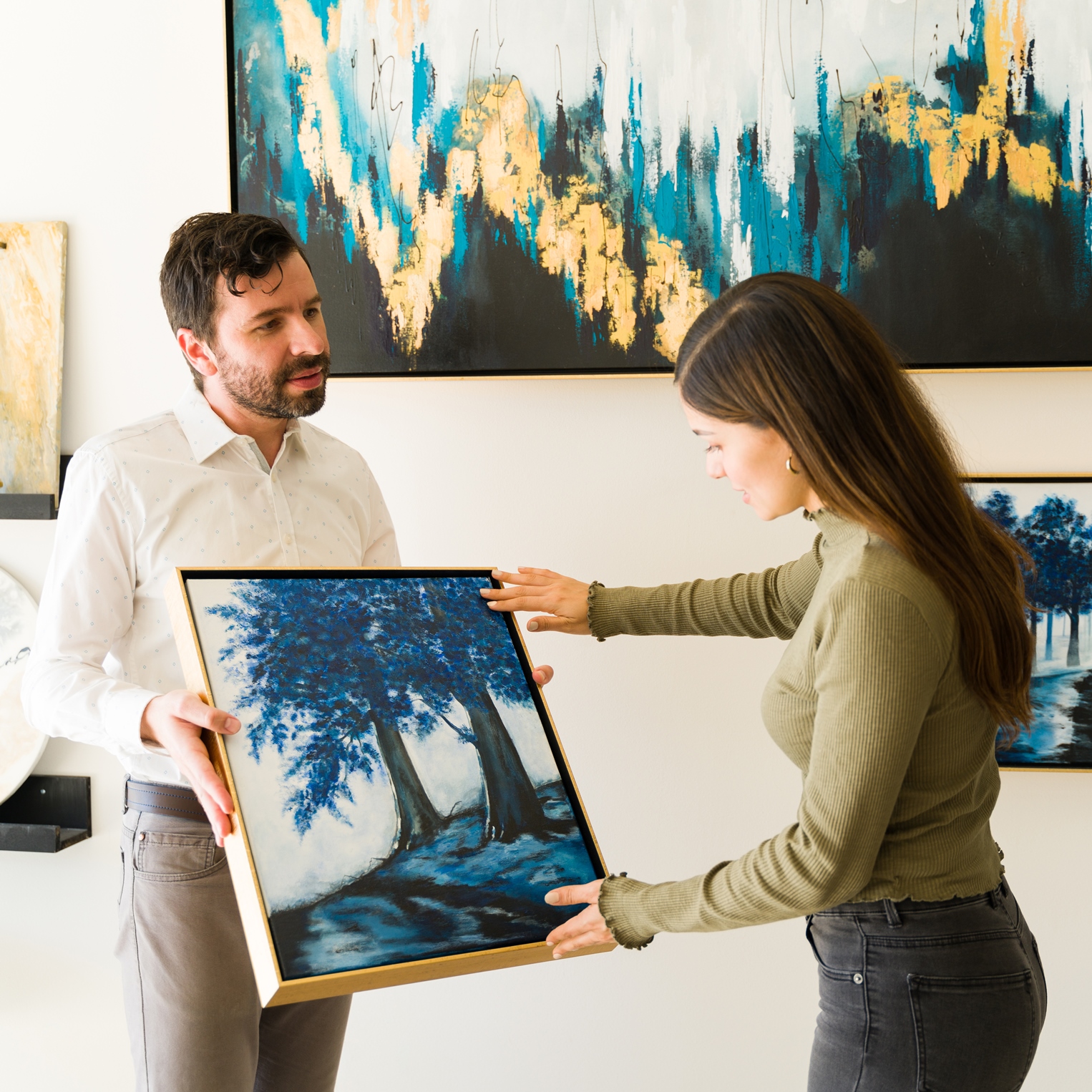Your home may already be filled with character and charm, but it might not be the safest place for your artwork. Paintings, especially older or delicate ones, can suffer from temperature fluctuations, humidity, poor lighting, and even air pollutants.
For instance, the British Association of Paintings Conservator-Restorers recommends that paintings be kept and displayed at temperatures between 18 and 24°C. Also, they should not be subjected to highly humid (more than 70 percent) conditions, as that may lead to mold growth.
Thankfully, to take such measures, you don’t have to transform your home into a museum to protect paintings. These small yet impactful changes will help keep your paintings looking as vivid and beautiful as the day you hung them.
#1 Upgrade to UV-Protected Windows
Sunlight is one of the biggest threats to artwork. The ultraviolet rays that stream through windows can gradually fade colors and weaken paint layers.
You can preserve your paintings by upgrading to UV-protected or low-emissivity (Low-E) windows. These specialized glass panels block a significant portion of harmful UV radiation without making your home feel dark or enclosed.
Likewise, you can also frame the paintings with specialized museum-quality glass. This type of glass can block up to 99 percent of harmful UV rays and protect your paintings from fading or becoming yellowish.
With such small improvements, your paintings will be less exposed to fading and cracking. The added benefit of UV-protected windows is that your home will also stay cooler in the summer and warmer in the winter.
#2 Use Exterior Window Trims for Added Protection
Want to protect your artwork from indirect sunlight and moisture while improving the look of your home? If so, the right window trim exterior solutions can make a world of difference. A durable exterior window trim acts as a stylish shield against rainwater seepage and drafts. This means fewer chances of humidity affecting the indoor air that surrounds your paintings.
Also, as Belco Forest Products notes, exterior house trim further protects your home against harsh weather, moisture, and insect intrusion. That means the trim adds multiple layers of protection to keep your paintings safe.
Besides, a modern window setup with quality trim also elevates your home’s curb appeal. You can choose trims that match your house’s design aesthetic, from sleek and contemporary to classic and rustic.
#3 Keep Humidity in Check
Moisture is the silent enemy of paintings. Over time, it can cause warping, mold growth, and even irreversible paint damage. While you don’t need to live in a climate-controlled gallery, you can still regulate humidity effectively.
Start by adding a dehumidifier in rooms where artwork is displayed. If your home has a basement or attic where moisture tends to build up, seal any leaks and ensure good ventilation.
For best results, keep the indoor humidity between 40 and 60 percent. You can also install a small digital hygrometer to monitor moisture levels.
#4 Improve Lighting with Art-Safe Fixtures
Many homeowners overlook lighting when thinking about art preservation. Regular incandescent bulbs emit heat, which can damage paintings over time. Fluorescent lights are not ideal either because they often emit UV radiation. The safest option is LED lighting. LEDs produce minimal heat and are available in color temperatures that closely resemble natural light.
When positioning lights, avoid direct exposure on the artwork. Use angled lighting or picture lights with adjustable heads to create soft illumination. It’s worth consulting an expert to find bulbs with a high color rendering index (CRI) so the hues in your paintings look natural.
#5 Seal Air Leaks and Maintain Proper Insulation
Temperature fluctuations are another common cause of deterioration in paintings. Rapid changes in heat or cold can make paint expand and contract, which may cause cracking or peeling. Sealing air leaks is a practical way to keep your indoor climate stable.
Inspect your walls, doors, and windows for any gaps where air might seep in. Adding weather stripping or caulk around these openings can make a noticeable difference.
Good insulation also keeps your heating and cooling systems from overworking, helping maintain consistent temperatures year-round. As a result, your paintings will remain safe from environmental stress.
Frequently Asked Questions (FAQs)
How can I tell if sunlight is damaging my paintings?
If you notice fading colors, yellowing varnish, or dry cracks, sunlight could be the cause. The damage often happens gradually, so you might not spot it right away. Try comparing older photos of your artwork with its current state to identify any visible color shifts or dullness.
Are dehumidifiers safe to use near valuable paintings?
Yes, as long as they are properly maintained and not placed too close to the artwork. A dehumidifier helps stabilize the air’s moisture level, reducing the risk of mold and warping. Choose a model with an automatic shut-off feature and keep it at a moderate distance for safe, even humidity control.
Do exterior home improvements really affect indoor art preservation?
Absolutely. Exterior upgrades such as window trims, insulation, and better sealing create a stable indoor environment. By preventing moisture leaks and temperature swings, these improvements indirectly shield your paintings from damage. A well-protected home exterior equals a safer interior for your valuable pieces.
Protecting your paintings doesn’t require a massive home renovation or an art conservator’s budget. Small, thoughtful changes to your home environment can have lasting effects. These changes also make your home more comfortable, energy-efficient, and more beautiful to look at.
